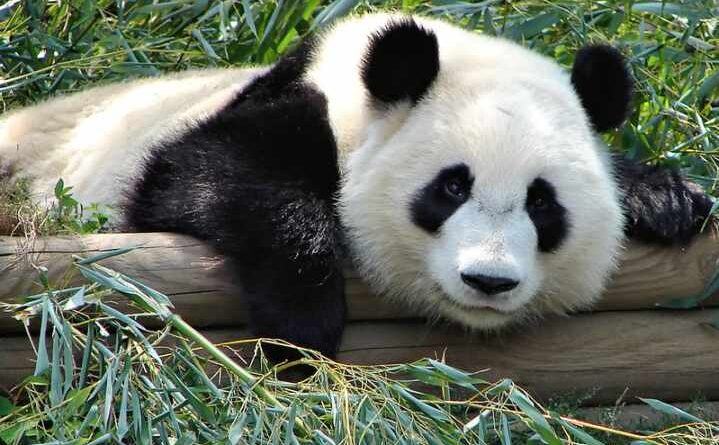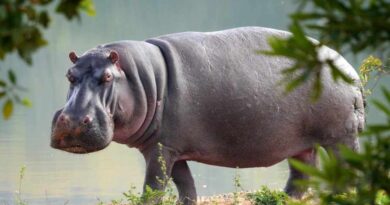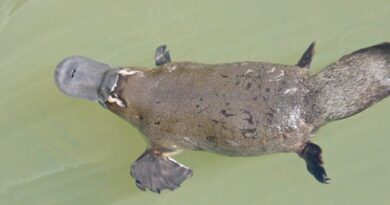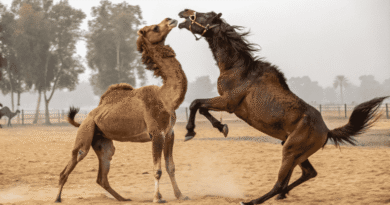PANDA
The biggest star in the animal world is the giant panda. When one of these cute animals shows up at a zoo, it always makes the news, and when a baby panda is born, it makes headlines all over the world. Everyone falls in love with it after looking at it.
What is it about it that makes it so popular? There are a lot of reasons why. First, its fur is black and white, which makes it stand out. It has jet-black legs, shoulders, ears, eyes, and the tip of its nose. Everything else is white. People like this black-and-white pattern because it stands out so much. We know this is true because in the past, we were always eager to make black-and-white pets out of wild brown animals. We have horses, dogs, goats, sheep, cows, rabbits, and even mice that are both black and white. So, when we see an animal like the panda that is already black and white without our help, we find it very appealing. Second, it’s a giant. We’ve always been amazed by big animals, and the name “Giant Panda” makes it sound exciting, like a big, strong, friendly monster.
But the truth is that it doesn’t weigh more than a person. It is called a “giant” because its only living relative is the red panda, which is much smaller. This thing is about the size of a pet cat. Third, it is very rare and comes from a strange country that is very far away. Since its wild home in the bamboo forests of the Chinese mountains is so hard to get to, the panda has always been a mysterious animal that is rarely seen in its natural environment. This gives it a certain glamour, as if it were a famous movie star who didn’t want to be interviewed.
The rareness of the giant panda also makes it very valuable. If a zoo wants to buy one, they find out quickly that it costs more than any other animal. When Chi-Chi, one of the most famous giant pandas, was brought to London Zoo, the animal dealer who went to China to get him had to trade a whole bunch of other animals with the Chinese. He had to give up three giraffes, two rhinos, two hippos, and two zebras to get one tiny panda cub. He had to pay a lot to ship all of those to China just to be able to take out his one small but valuable prize. The panda is also well-known because of how it makes. It has a flat face, which we like because our faces are also flat. We like animals that act and think like people.
They make us feel more at ease, like we’ve known them for a long time. This is something Walt Disney has used a lot when making his animal “heroes.” He makes the faces of friendly animals flat, while the faces of bad guys are long and pointy. When the panda eats or rests, it often props itself up in a very human-like way. If it is eating bamboo, it will hold the stem in one of its front feet and bring it up to its mouth. This is easy for most animals, but the panda does it all the time. Any animal that can sit up straight is especially appealing to us because it reminds us of how we do things.
The giant panda is so short that you can barely see it when it walks. When the animal sits down, this small piece of tail almost disappears. Again, because humans don’t have tails, any animal that doesn’t have a long tail is going to be more popular. There are many ways in which the giant panda looks not only like a person but also like a baby. Like a baby, it is round and soft. It is also silly and clumsy, like a young child. From far away, the black marks on its face make it look like it has very big eyes. This also reminds us think of a human baby.
Being babyish in these ways makes the giant panda more appealing. It makes us feel like we need to protect it. pet When we are young, we do this with our toy pandas, and before long, we start to think that pandas in real life must also be big, soft, harmless furry friends. So, we are amazed to see every animal. We want to pet and cuddle it. Find out that when they get older, in real life, they can be dangerous and even violent. In an American zoo, one giant panda attacked its keeper so badly that the keeper lost an arm.
Even the much-loved Chi-Chi at the London Zoo became wild all of a sudden. She threw her sixteen-year-old keeper to the ground and sat on him without warning. When she was a little cub, they used to play rough with each other a past. But now that she’s grown up, her mood has changed. The boy was no longer playing. As the boy lay helpless on the ground under her weight, she used her strong jaws to bite his right leg. He started yelling for help when blood started coming out of his leg. Another keeper jumped into the panda’s pen and saved him, but the boy was hurt so badly that he couldn’t go back to work for seven months.
When he got back, Chi-Chi saw him and started growling at him very loudly. For his own safety, he was never allowed to go into her enclosure again. This boy liked Chi-Chi a lot, and he had never done anything to make her fond, so her wild behaviour was a big surprise. Why did it happen? Since the attack, we’ve learned a lot more about how pandas live in China, and we think we understand them a little better.
We now know that when wild pandas reach adulthood, they want to be left alone. So, Chi-Chi probably decided one morning that it was time to say goodbye to her old friend. Most animals would have just made threats to attack and shown how they felt without drawing blood. But Chi-Chi was a lot rougher.
This is surprising to us because of the panda’s special appeal, which comes from its human-like and “baby-like” features that make it look so cute. It shows that we must always try to understand an animal from its own point of view, not from ours. Just because an animal looks friendly doesn’t mean it is friendly. In the same way, just because another animal looks scary doesn’t mean it is. Animals’ looks aren’t always what they seem to be. Some of the animals that look the worst are easy to take care of, and some of the ones that look the best, like giant pandas, can be very dangerous. It would be wrong to say that Chi-attack Chi’s was her fault. She wasn’t to blame. All she was saying, in a harsh way, was that she had reached an age where she wanted her own space and would not share it with anyone. From her point of view, it made perfect sense to do this. We didn’t understand her well enough, that’s all.
It’s possible that an important clue was missed. Because the black and white pattern on the panda’s fur was so pretty, we didn’t stop to ask why the animal had these markings. There is a lesson to be learned from the skunk, another animal with black and white markings.
Even though the skunk is much smaller than the giant panda, it has very similar markings when seen from a distance. In the case of the skunk, we know that this coat pattern serves as a warning to enemies. Skunks can squirt their attackers with a smelly liquid that stings their eyes and gives them a bad smell all over. The smell stays with them for days, and it’s only natural that they’ll never forget their first time meeting a skunk. The animal’s unusual black and white markings help them remember it so they can recognise it if they see it again. This warning pattern becomes the skunk’s “flag,” saying, “I’m dangerous, stay away!” When you think about this, it makes sense to think of the giant panda’s spots as another warning sign. But the panda can’t spray its enemies with a smelly spray, so what is it trying to warn them about? What is its hidden strength?
We need to look at how the animal eats to find the answer. Millions of years ago, the ancestors of the giant panda used to eat meat, but as time went on, they became more and more fond in plant foods. They still ate some meat from time to time, but most of their food now came from plants. In particular, they chewed the tough shoots of the bamboo plants that grew in large numbers in the mountains where they lived. The pandas’ jaws got bigger and stronger as they tried to eat these tough shoots. They got so strong that if natural enemies like wild dogs attacked them, they could easily defend themselves by breaking a dog’s leg like a hard stick of bamboo.
The giant panda’s new weapon was its incredibly strong bite, and it had to tell other animals about this. It was trying to say, “Don’t even try to crunch me, because I can break you up into tiny pieces.” If it could send a signal that said this, it could stop attacks from happening and live a much more peaceful life.
Like most other mammals, the first pandas probably had dull brown fur. But over millions of years, the dull brown turned into the bright black and white we see today. Now, the pandas could do what the skunks do and show themselves to their enemies from afar. Battles that are full of blood could be avoided. If young attackers met pandas for the first time and made a mistake, they would be much more likely to remember them and stay easily from them in the future. The wild dogs and leopards would never try twice to get close to a wild giant panda, just like the panda-boy at the London Zoo never went near Chi-Chi again.
Adult pandas live alone in the wild, so their breeding season is very short. The males and females only get together to mate, and then they go back to their own lives. At some point, the female gives birth to her tiny, rat-sized baby on her own in a safe place like a hollow tree or a simple den. The birth weighs no more than 150 grammes when it is born. Its mother weighs 800 times as much as it does.
The baby panda is blind and doesn’t have any teeth yet. It spends most of its time being held by its mother. She sits up to do this, and as she hugs and kisses her baby, she looks a lot like a human mother. When the baby is about three months old, it can crawl. It grows fast and gains weight at a very fast rate. The mother is very protective of her baby and keeps a close eye on her with care and love. As soon as it starts to set up, though, all of this changes, and the young bird, whether it’s a male or a female, has to go off on its own to find its own private feeding grounds. The giant panda lives alone except for a few short mating seasons each year. This will then take over, and the animal will spend the rest of its days alone in the vast bamboo forests.
Less than 1,000 giant pandas are still alive today, which is very sad. Some people think that there may be no more than six or seven hundred of them in the whole world. The Chinese know how valuable they are and are trying hard to stop the number from getting smaller, but it’s not easy. Even though people are trying to protect pandas, it is possible that they will all die out in the next 100 years.
The biggest threat they face is that people who need more farmland are slowly cutting down their bamboo forests. Trapping by accident is another danger. Even though pandas are not hunted for food, they sometimes get set in traps meant for other animals and die.
Also, there are still some smugglers who kill giant pandas on purpose to get their skins. These are taken out of the country in secret and sold to wealthy people in other countries who are willing to pay up to £100,000 for a single black and white panda skin. To stop this, the Chinese have now made skin trading a crime punishable by death instead of life in prison. Some drug smugglers have already been put to death. But despite everyone’s efforts, the truth is that the giant panda will probably be the first of the world’s great animal stars to go extinct in the near future.



